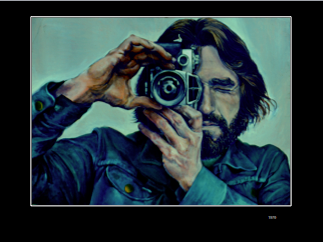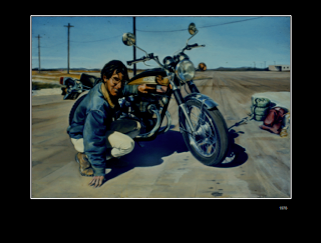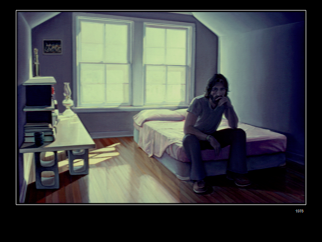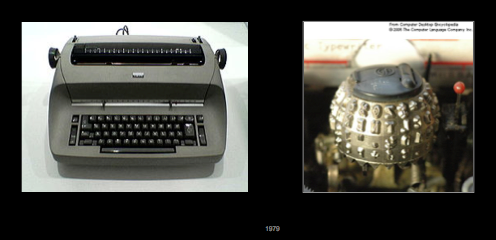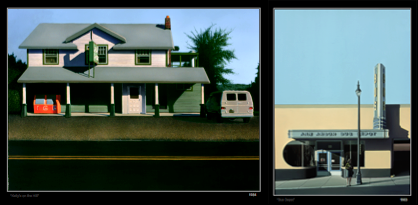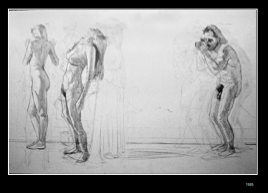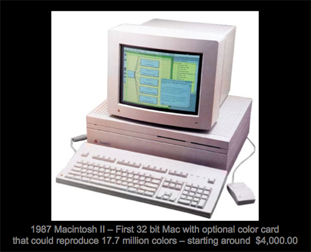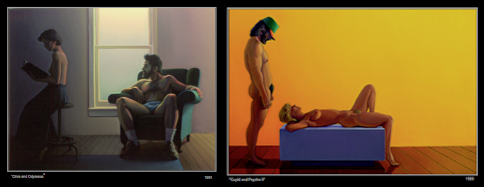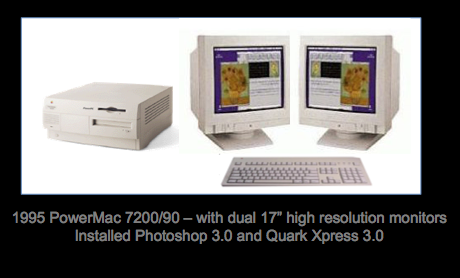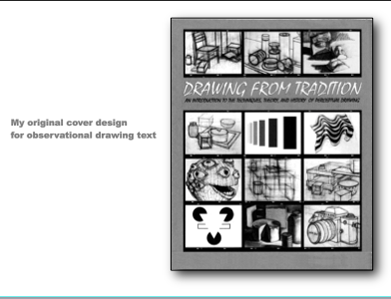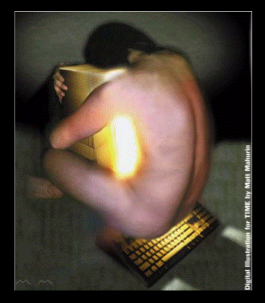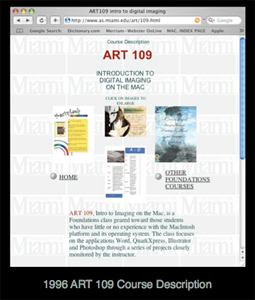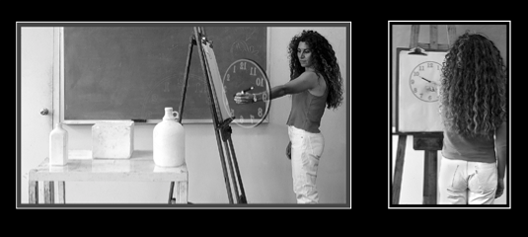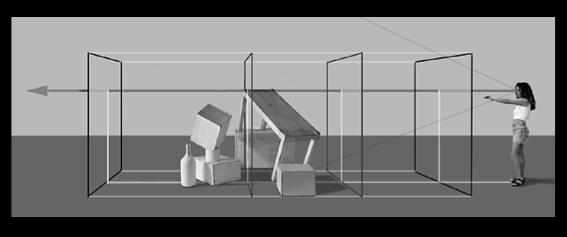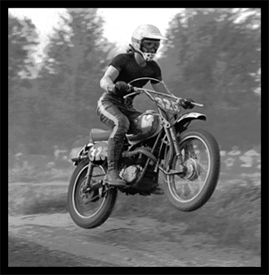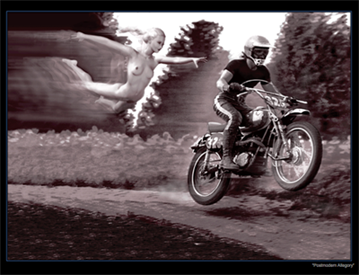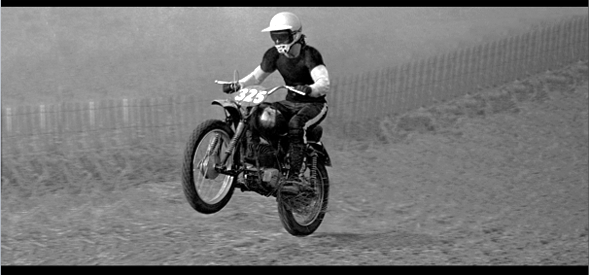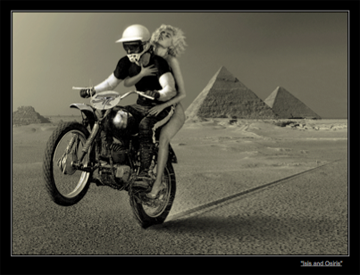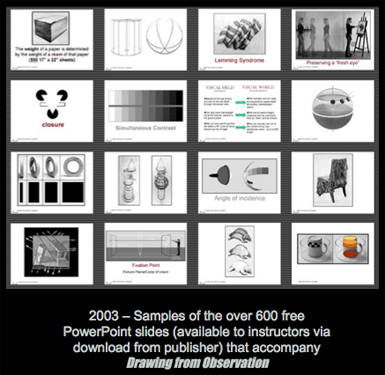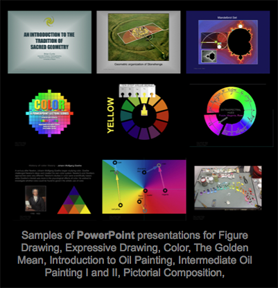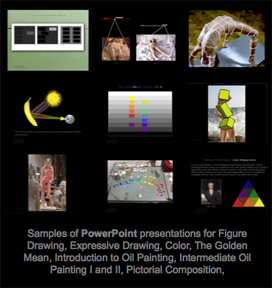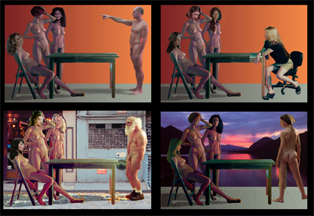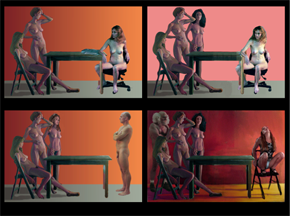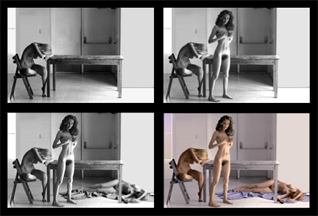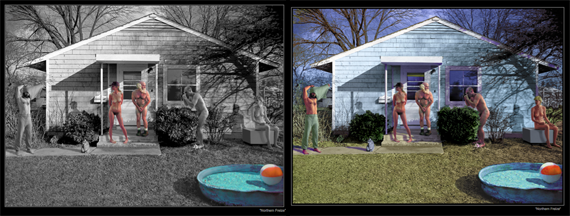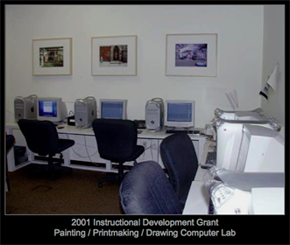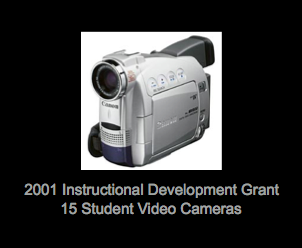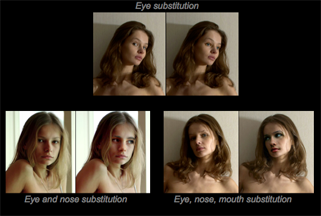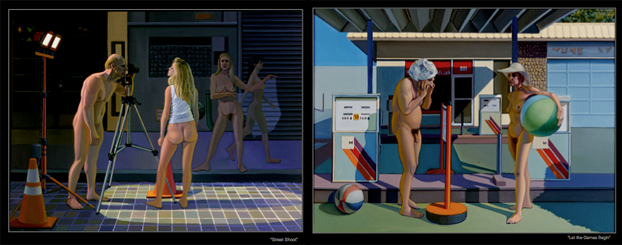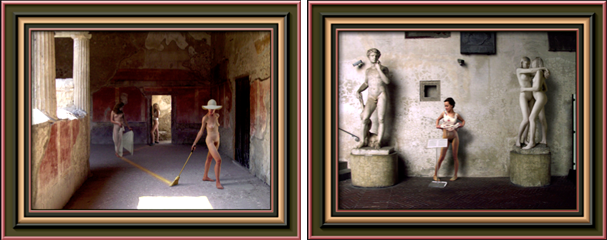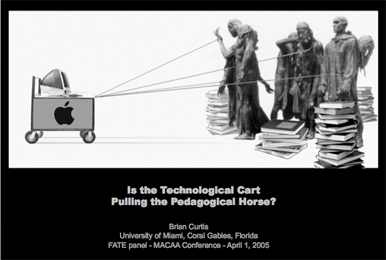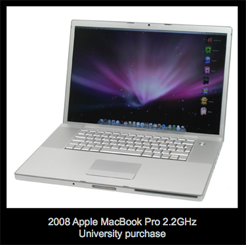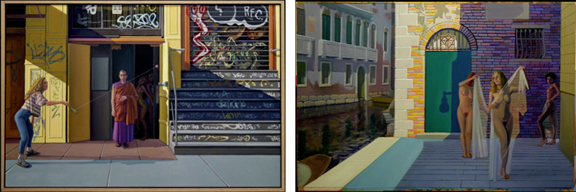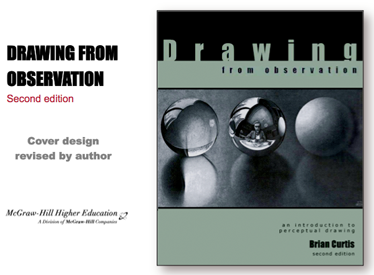 |
||||||||||||||
 |
||||||||||||||
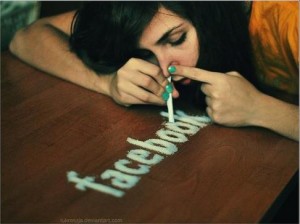 |
||||||||||||||
|
Paper delivered by Brian Curtis, Associate Professor, University of Miami, Coral Gables, Florida I first enrolled as a painting student in a regional state university in Massachusetts in the early 1970's when Modernism’s orthodoxy of connoisseurship and the push/pull of Hans Hoffman dominated a majority of studio programs around the country. Despite being educated in this pedagogical environment I was drawn to painting based in the skillful rendering of observed optical phenomenon in a rationally organized space. I was permittted to paint what ever and however I wanted but was regularly criticized for my efforts. As one might expect I received little to no instruction. I was graduated in 1976.
Coincidentally, that was the year that Steve Jobs and Steve Wozniak formed Apple Computer and released the first consumer computer, the Apple I. I was oblivious of this development.
My graduate school experience duplicated my modernist undergraduate experience but my commitment to representational art remained strong.
I was granted my MFA in 1979. My thesis document was typed on an IBM selectric typewriter.
That same year Apple came out with the first computer with a graphical user interface (GUI).
After graduation I spent three years teaching painting, drawing, and Art History at a small Mid-western liberal arts college. My paintings during this time were derived from B/W photographic research sources.
After three years at this small college and one year of concentrated painting I was invited to the University of Arkansas to serve as a Visiting Assistant Professor. While there I worked on a series of paintings of regional architecture based in B/W photographic research
During my year at Arkansas, Apple unveiled an ad during the 1984 Super Bowl that popularized the notion of the personal computer. The ad depicted an Orwellian society that would soon be liberated by affordable computers.
The following year I was hired to teach painting and coordinate the foundations program at the University of Miami. By 1987 my studio work had evolved to frieze-like depictions of implied psychological narratives. My compositional pencil sketches were worked out through a laborious process of trial and error.
Around 1987 the Graphic Design program at UM began requesting computers. Because these early machines were quite expensive (between $4,000, and $6,000 each) no more than one machine was purchased in any given year.
By the mid 90’s, a computer savvy hire (in Photography) joined the department. His appearance on campus was soon followed by a substantial University grant to purchase 30 PowerMac 7200/90 computers loaded with Photoshop and Quark.
For the time being my studio practice remained unaffected by the advent of computers. Coming up with compositions continued to entail working through multiple versions of preparatory drawings before starting a painting.
The new computer labs generated quite a buzz among my colleagues, particularly in regard to the poetential for desktop publishing and photographic image manipulation. At the peak of this buzz, a textbook publisher’s rep approached me, supposedly in response to recommendations from unnamed colleagues, and suggested that I write a drawing book. Flattery got the best of me and within a week I had signed a contract to produce a production-ready manuscript for them in 18 months. What was I thinking? I now realize how painfully naïve and gullible I was to jump into this career altering decision When I signed the contract I did not own a computer, had never turned one on, could not type, had no experience with book design, and had never written anything longer than a twenty-page paper. As you might imagine ther was no way I was going to complete the manuscript in agreed upon 18 months because, in addition to teaching full-time and I also knew that I wanted to maintain creative control of the manuscript, the layout, the typography, the illustrations, and even the cover designs. This decision certainly made the process more satisfying but it also made it more complicated. With the assistance from my colleague in photography I bought a computer and set about installing and learning the necessary software, learning to type, learning to scan student projects, choosing a layout, choosing fonts, creating technical illustrations, and, perhaps most importantly, figuring what it was that I had to say about observational drawing that hadn’t already been covered in existing texts.
The project’s working title was originally Drawing from Tradition but when my first publisher admitted he was unprepared make good on the marketing promises I signed a contract with McGraw-Hill Higher Education whre the title was changed to Drawing from Observation: An Introduction to Perceptual Drawing.
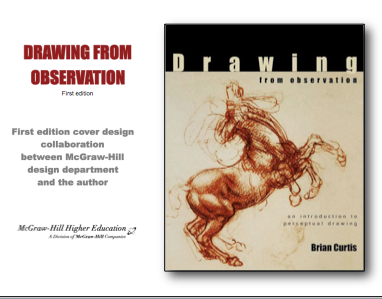 To say that I became thoroughly absorbed in my desktop publishing project is an understatement.
I bought into digital technology hook, line and sinker and dedicated the majority of my creative energy working in front of the computer. Although my involvement with the computer started with my book project, it was exponentially reinforced by a flood of technological hype that declared that the future, in general, and of higher education, in particular, was inexorably intertwined with computers and to be competitive as an educator and an artist it was critical to become computer literate. Jumping at the book contract had already established that I was gullible, so it should not be surprising that I decided to go “all in” and by 1996 had personally spearheaded the development and implementation of a required foundations course titled “Digital Imaging on the Mac.” It was at this point that the University bought me a new PowerMac 8600.
Three years into my book project I found myself assisting a colleague with the planning and preparation for a Southern Graphics Conference 2000 to take place in Miami. We came up with a timely and catchy theme, Tradition and New Technology. Only after we had already announced the theme did it occur to us that the theme required a departmental web presence to avoid appearing like digital posers. Since I was the only planning committee member with a computer, the responsibility fell in my lap. I was also tapped to learn PowerPoint to make a promotional presentation at the 1999 conference in Tempe, AZ as well as being responsible for producing all the conference promotional materials.
I think I went along with this heavy workload this required in large measure because I was caught up in the hype surrounding everything digital, I embraced these challenging tasks as opportunities to broaden my computer skills. Having drunk the Kool-Aid I wasn’t going to be the one who got left behind. Two years and several hundred hours later we had our promotional materials and fully functioning 500 page website to promote the conference.
As you might imagine, while I was focusing on my book, the website, and the promotional materials, the amount of time I had to work in my painting studio declined precipitously. Perhaps the most frightening part was that I was so busy with my various digital projects that I hardly noticed. When I worked on my book the part that I enjoyed the most was creating technical illustrations. This activity reminded me of drawing and painting. Eventually my skill with Photoshop increased to the point where I could create convincing illustrations of almost anything that I could visualize in my minds-eye.
As the book neared completion I began experimenting with images unrelated to the book. The first such images were manipulated B/W photographs from a brief career in amateur motocross. One of these images integrated a Poser figure into the composition whilethe other pieced together eight separate image files in constructing the final image.
After Drawing from Observation was published there was nothing to prevent me from returning full time to the painting studio. Nothing, that is, except the compulsive cravings of the computer addict I had become over the previous five years. Instead of immediately going back to painting I to set to work on 500 instructional PowerPoint slides to accompany the lessons in my drawing book.
These slides did improve my teaching and were extremely helpful in training the TAs and adjuncts. Two years later they were made available to instructors, via download, from my publisher as a way to promote the book. As soon as I completed my drawing PowerPoint slides, my growing addiction to my computer compelled me begin a series of PowerPoint presentations on every possible lecture topic I covered in every course I taught, everything I could think of as being helpful for figure drawing and oil painting topics, as well as stand alone presentations on “Color” and “Sacred Geometry” – for a total of several thousand slides.
As much as I enjoyed making and then using these slides in my teaching and lecturing, my absence from my studio was starting to trouble me so I took a rather unproductive path toward reengagement with my studio practice. I bought a new computer.
My plan was to apply my digital skills to the creation of compositional studies for my narrative paintings. I was hoping that manipulating images digitally would prove faster and provide considerably more subtlety of interaction than I’d experienced working out my compositional decision making through drawings. I first used this new equipment in a project to revive a failed series of paintings I’d been struggling with for several years. Besides making the process faster I was hoping that the imaging power of Photoshop would allow me to produce more evocative psychological drama from compositions. To that end I erased figures, moved or modified existing figures, added new ones, and added new backgrounds.
Unfortunately, the presence of too many pre-established variables left the results unsatisfactory so I decided to abandon the entire series and start over with compositions that would be 100% digital from the start.
With the first digital compositions I attempted from scratch, much of my research material came from scans of B/W film. As a result, in addition to experimenting with the psychological expressiveness of gesture and positioning, I also began colorizing the images.
I enjoyed colorizing these images but it took an inordinate amount of time and speeding up the process was my goal so I invested in the first of a string of digital cameras. With the digital camera in hand I began collecting color research material to use in my compositional studies.
As though my addiction to computers needed any encouragement, the technology policies of my University certainly poured proverbial gasoline on my fire. This institutional accelerant began in the form of a funded proposal for a ten-station computer lab exclusively for drawing, painting, and printmaking students.
This was immediately followed by a funded instructional grant I’d submitted for ten video cameras to start the department’s first video program in the new lab.
And it didn’t end there. My university continued to play the persuasive serpent to my inner Eve. It didn’t take me long to realize that putting the word digital into a grant proposal caused administrators to loose control of their budgetary sphincters. I was wired and the administration loved it. In the course of several years I was awarded two summer research stipends along with two research support grants. All of these funds were aimed at helping me develop ways of applying digital technology to my traditional studio research. In looking back, what it succeeded most in doing was marginalizing my painting research. As my full-color digital image collection increased I came to realize that I could tailor the expressiveness of individual figures by replacing existing heads with heads of other models I’d photographed or downloaded from the Internet. Eventually I evolved to replacing eyes, noses, mouths, breasts, pubic hair, as well as providing legs and arms for partial figures.
These composite figures provided me greater variety of “personalities” with which to populate my narratives along with a new level of control over nuances of psychological interaction. Based on digital studies using composite figures, I exhibited 5 new paintings and 12 ink-jets in the fall of 2001.
By 2003 I created a series of 15 digital compositions based on background images I had collected during a month-long Sabbatical trip to Italy. I was very excited with the way the textured surfaces of the ancient architecture amplified the evocative overtone I’d been seeking in my narratives. When I began this series I thought of them as studies for future paintings but the timing of an offer to exhibit work related to my sabbatical the exhibition forced me to consider exhibition the ink-jet-prints as finished artwork. I went ahead with the exhibition but I found myself increasingly conflicted about having digital prints take the place of paintings. Looking back, I think I subconsciously represented that conflict by adding a faux framing element as an integral part of each image.
The inner conflict that this exhibition generated continued to trouble my thoughts and, as attached as I was to creating images on my computer, I became increasingly aware of how over the past ten years my use of the computer had devoured the time I’d previously spent drawing and painting. Rather than subsiding, these personal misgivings festered and eventually erupted into an anti-technology polemic that I delivered at a FATE session at the Biennial MACAA Conference in Minneapolis in 2004 and was later asked to reprise at the Biennial FATE Conference in Columbus, Ohio in 2005.
As my thinking about the computer and its impact on my studio career came in to focus, I made a conscious decision to once again concentrate my creative energies on drawing and painting. However, no sooner had I begun to readjust my work routine when my publisher sent word that McGraw-Hill needed a revised manuscript for a second edition of Drawing from Observation that included a new chapter, a new layout, 200 new images, and text revisions. Talk about being knocked on my kiester before getting onto the digital abstinence wagon. To further complicate my fall down the rabbit hole the university simultaneously bought me a G4 Dual Intel processor 17” PowerMac.
In my recovery from computer addiction I am determined to succeed by taking it one day at a time. Fortunately, the university is no longer offering quite as many grants for digital technology projects as it once had. Additionally I have been a sabbatical next spring with which to re-immerse myself in my painting studio. In preparation for my sabbatical I am working on a series of paintings derived from digital compositions and the results so far have been encouraging
For the following eighteen months revising the book and updating the accompanying PowerPoint slides once again devoured most of my creative energy.
The second edition was published in January of 2009 and I am now committed once again to spend the majority of my research time drawing and painting in the studio. I have no illusions how difficult it will be to overturn what is more than a ten-year computer fixation, especially with a brand new G5 Quad Tower and BenQ 23” hi-res monitor sitting on my office desk. Let me close by quoting from an observation on the suitability of digital technology as a learning tool that I included in the second edition of Drawing from Observation: “A rarely discussed shortcoming associated with the use of computers as learning tools is their reliance on simulation over hands-on manipulation of the physical world. It is important to remember that learning is, at its best, a broad based emotional, intellectual, and tactile experience. It flourishes when all five senses are engaged. Knowledge is enhanced when we learn with our senses and experience the physical world through our muscles and reflexes as opposed to substituting something as mechanical and synthetic as a computer interface for our physical experiences. Without direct awareness of our physical bodies and how our bodies react to and affect wider natural systems we become unable to separate the natural from the artificial, real from unreal. Among scientists there is growing belief that artificial intelligence will never be achieved because without a body a computer can not "feel" and therefore cannot experience intuitive and emotional information processing, the corner stone of what it means to be a creative thinker.” Luke, Turn off the computer, |
||||||||||||||
| PRESENTATION INDEX | SITE INDEX | |||||||||||||
| email: brian_curtis@mac.com | ||||||||||||||
